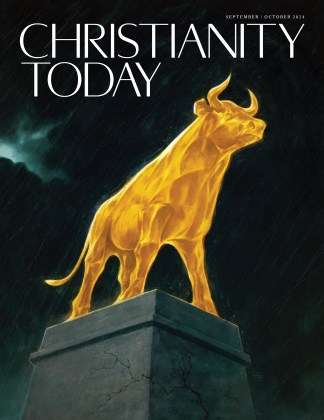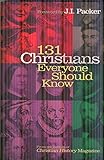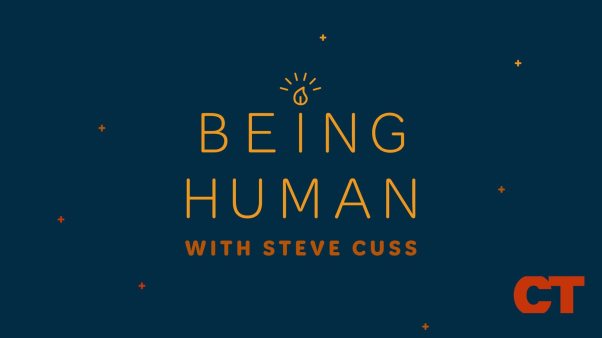During most of the nineteenth century, American Protestants believed they were living in special times, that current events were hastening the coming of the Kingdom of God on earth. Hymns like the “Battle Hymn of the Republic” became popular because they so well expressed this hope: “Mine eyes have seen the glory of the coming of the Lord, / He is trampling out the vintage where the grapes of wrath are stored / He hath loosed the fateful lightning of his terrible swift sword, / His truth is marching on.”
Undergirding this optimism was the doctrine of postmillennialism—the belief that the Second Coming will take place after the millennium of blissful peace and prosperity for the church, which will be ushered in by the divinely aided efforts of the church.
It comes as a surprise to many that for most of the nineteenth century, postmillennialism was “the commonly received doctrine” among American Protestants, as one minister put it in 1859. Postmillennialism dominated the religious press, the leading seminaries, and most of the Protestant clergy, and it was ingrained in the popular mind.
Pace-setting Puritan
Postmillennialism was first clearly articulated in America by a man many consider the greatest theologian in American history, New England Congregational pastor Jonathan Edwards (1703-1758).
A.D. 1739
Jonathan Edwards preaches a sermon series later published as A History of the Work of Redemption.
Edwards was a devoted student of Scripture, including the Book of Revelation. He also entertained fervent hopes that God might do something special among the people of New England. He was circumspect when revival broke out in his own congregation in the 1730s, but when all of New England was convulsed by spiritual awakening in the early 1740s, he could not hold back: ” ‘Tis not unlikely that this work of God’s Spirit, that is so extraordinary and wonderful, is the dawning, or at least a prelude, of that glorious work of God, so often foretold in Scripture. … And there are many things that make it probable that this work will begin in America.”
After the Great Awakening, Edwards became more cautious and dated the Millennium (a term he used rarely) somewhere around the year 2000. He believed, with many others, that this date would mark the beginning of the seventh and final millennium of world history. In the interim, much remained to be done: the fall of Satan’s kingdoms (that is, the papacy and the Ottoman Turkish empire), the conversion of the Jews, and the spread of true Christianity “through the vast regions of the earth.”
Edwards envisioned the Millennium as the church’s "triumphant state," a time of Sabbath rest and peace. He expected it to be a time of great advance in knowledge "when neither divine nor human learning shall be confined and imprisoned within only two or three nations of Europe, but shall be diffused all over the world.” He looked forward to a time of great holiness when “visible wickedness shall be suppressed everywhere, and true holiness shall become general, though not universal,” and a time of great prosperity. He regarded Constantine’s era a type of the greater reality to come, so he also expected the Millennium to be a time when true religion would be held in great esteem and saints would rule on all fronts.
How will this all come to be? Here was Edwards’s greatest contribution: “This is a work that will be accomplished by means, by the preaching of the gospel, and the use of the ordinary means of grace, and so shall be gradually brought to pass.” Yet Edwards also expected that God’s Spirit “shall be gloriously poured out for the wonderful revival and propagation of religion.”
The combination of the “extraordinary” blessing of the Spirit and the “ordinary means of grace” entrusted to the church convinced him that “this great work of God will be gradually wrought, though very swiftly, yet gradually.”
Furthermore, he was adamant that this postmillennial vision was a necessary incentive to sustain the best efforts of the church: “Indeed, the keeping alive such hopes in the church has a tendency to enliven all piety and religion in the general amongst God’s people, that it should be carried on with greater earnestness and cheerfulness and faith.”
After the American Revolution, in the 1790s, there was a renewed interest in biblical eschatology. Jonathan Edwards’s 1739 sermon series, published posthumously in 1774 as A History of the Work of Redemption, was reissued in the 1790s and many times thereafter. Through the nineteenth century, Edwards’s work had enormous influence on popular culture, and among theologians it set the terms for discussions.
For example, Samuel Hopkins was an Edwards disciple and Congregational minister in Newport, Rhode Island, who produced his own Treatise on the Millennium in 1793. Hopkins’s views anticipated tendencies that would flower in the next century.
First, he was compelled to a social activism unknown to Edwards. Since Newport was at the center of the triangular trade, involving the exchange of rum for African slaves, Hopkins launched a crusade against the trade, advocated complete emancipation, ministered to more blacks than any other New England minister, and predicted God’s judgment on the nation as long as it denied freedom to Africans.
Second, Hopkins believed that ultimately the vast majority of human beings would be saved, with the saved outnumbering the unsaved 1,000:1.
Even as Hopkins speculated about ratios, revival surged again. This wave—the Second Great Awakening in the first half of the nineteenth century—swelled the tide of millennial anticipation. So numerous and regular were the awakenings that it raised the possibility of a “perpetual revival of religion—a revival without a consequent decline.”
By studying the laws underlying that spiritual renaissance, people could use—indeed, God expected them to use—means that could produce revivals at will. Similarly, the Millennium would not come without the systematic labors of the saints. On both fronts, then, evangelicals emphasized that God worked through means.
No one articulated this theme better than revivalist Charles Finney (1792-1875). Passionately committed to promoting revival after his own dramatic conversion in 1821, his postmillennial views induced maximum evangelical exertion, as well as repentance and belief.
He did not believe, for instance, that revivals were the result of miracles but “the right use of appropriate means.” Thus he instituted “new measures,” new techniques for instigating revivals: the anxious bench (where sinners were singled out for exhortation), informal public praying, and protracted meetings.
Never one to mince words, Finney allegedly asserted that “if the church will do her duty, the Millennium may come in this country in three years.” This led in the years before the Civil War to unprecedented evangelical social and religious reform: temperance, antislavery, peace, women’s rights, education, as well as dramatic expansion in home and foreign mission work.
All of this would be jeopardized, Finney believed, if Christians succumbed to a belief in premillennialism. Thus when William Miller began to stir up excitement about an imminent return of Christ in the early 1840s, Finney thought the movement “wild and irrational,” and he confronted the fervent adventist face-to-face, trying to set him straight about the Book of Daniel.
As it turned out, Miller’s failed crusade only accelerated acceptance of the postmillennial faith in an America that was increasingly optimistic about its future. Pastor Lyman Beecher believed “the Millennium would commence in America.”
The editors of The Independent exulted in 1851 that “a grand feature of our times is that all is Progress.” Christianity and culture seemed to be marching together “onward and upward” toward the “grand consummation of prophecy.”
The revival of 1858 quickened such hopes, such that Joseph Berg, Dutch Reformed pastor in Philadelphia, could exclaim: “Who does not see that, with the termination of injustice and oppression, … with the establishment of righteousness in every statute book … with art and science sanctified by the truth of God, and holiness to the Lord graven upon the walls of our high places, and the whole earth drinking in the rain of righteousness … oh! This is the reign of Jesus.”
Bursting the balloon
The American Civil War was the first event to burst the postmillennial balloon for many believers, both in the North and South. Over the next few decades, immigration, urbanization, and industrialization created new, complex, and seemingly intractable problems for the nation—and for postmillennialists. The world was simply not getting better. The last vestiges of postmillennialism merged with the social gospel movement, which jettisoned notions of a transcendent Second Coming but still called for “conversion of the industrial, commercial, political, educational, and social interests of the world to Christ.”
The twentieth century has not been any kinder to postmillennialism. It has seemed increasingly implausible because events have stubbornly refused to conform to its inherent hope about the future. Still a remnant remains—mostly in the Reformed camp or its Reconstructionist/theonomist variant—though their postmillennialism has been sustained in spite of experience, not because of it.
Steven Pointer is professor of history at Trinity International University, Deerfield, Illinois, and author of Joseph Clark: Boston Lecturer and Evangelical Apologist (Mellen, 1991).
Copyright © 1999 by the author or Christianity Today/Christian History magazine. Click here for reprint information on Christian History.











